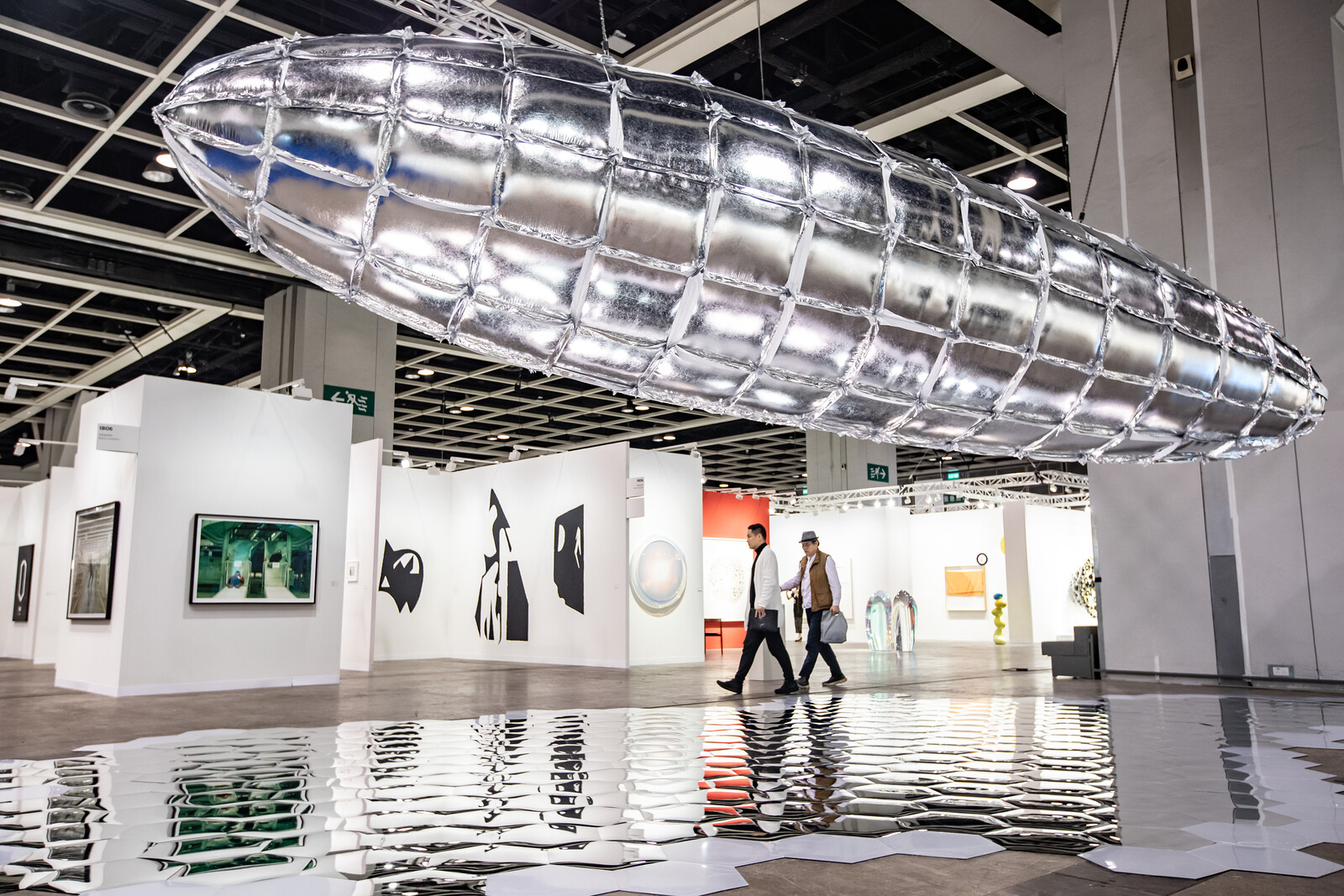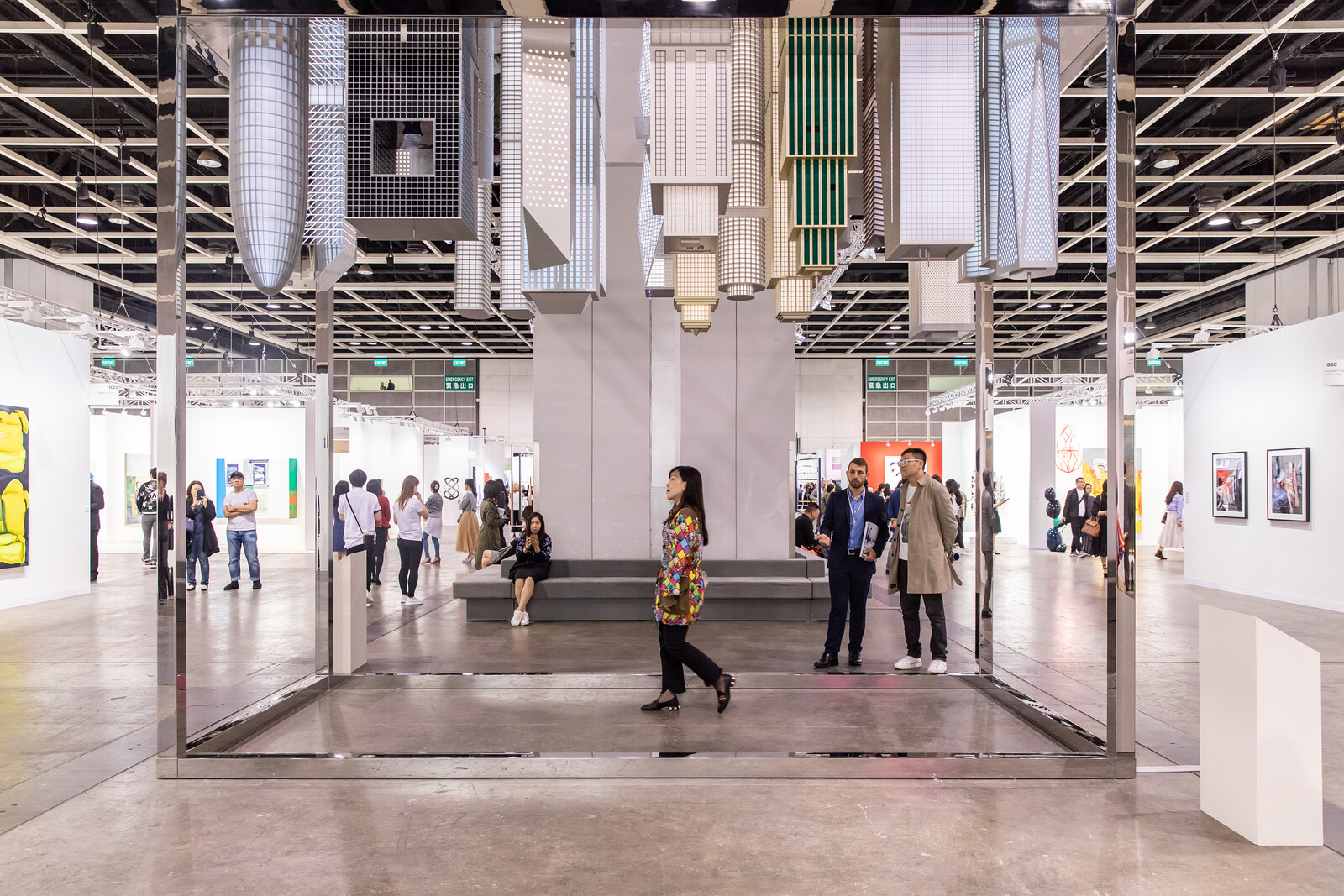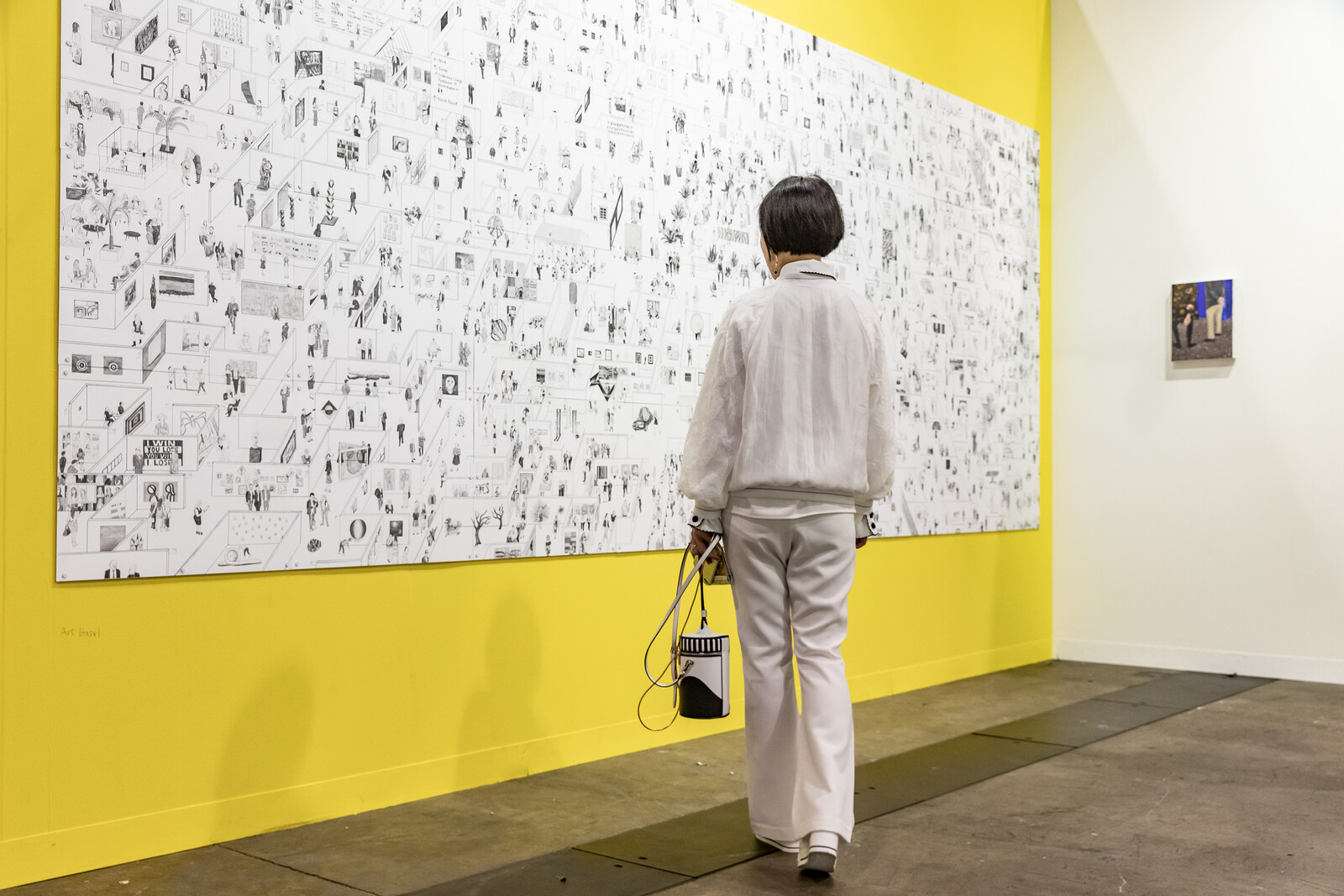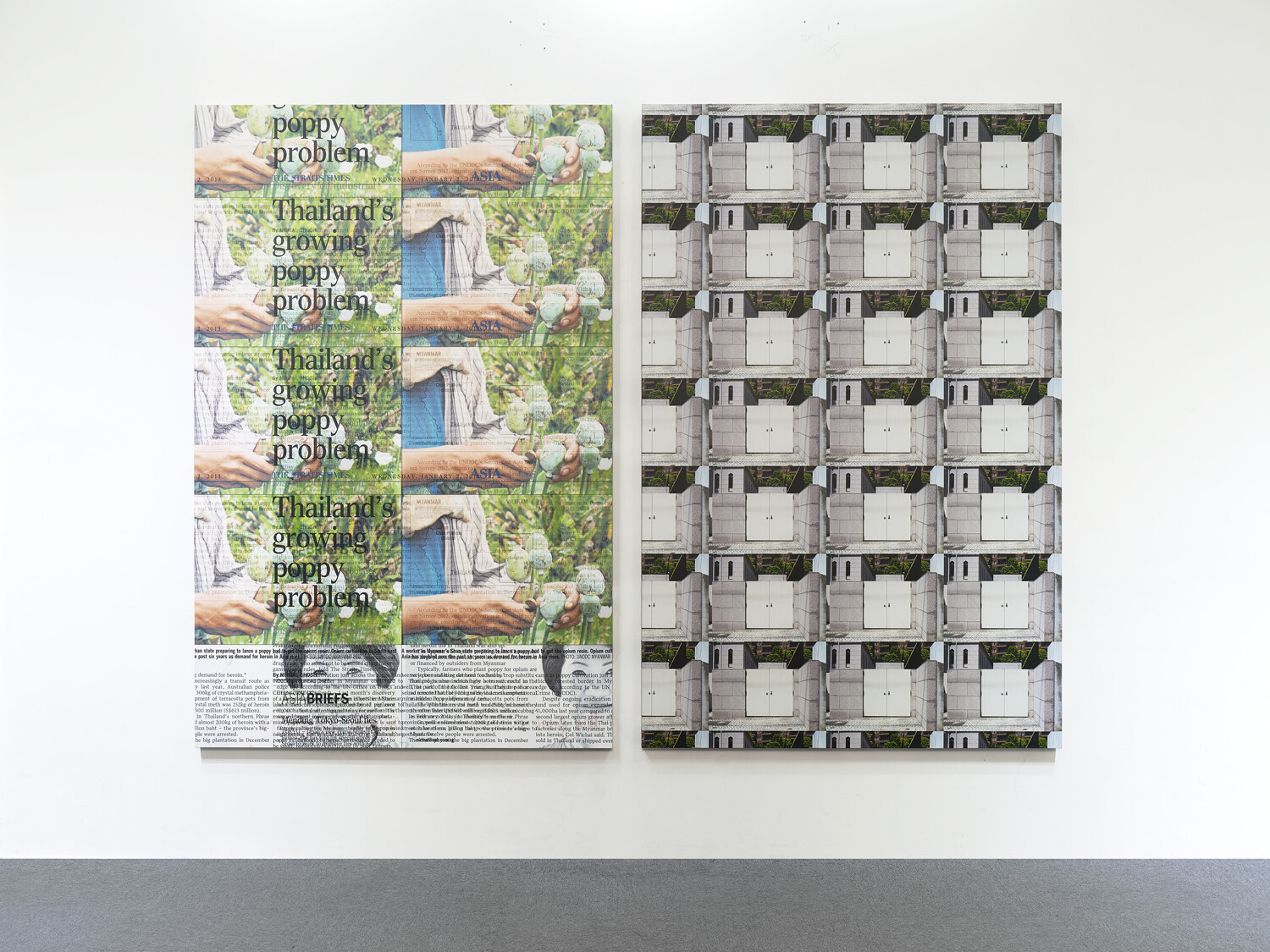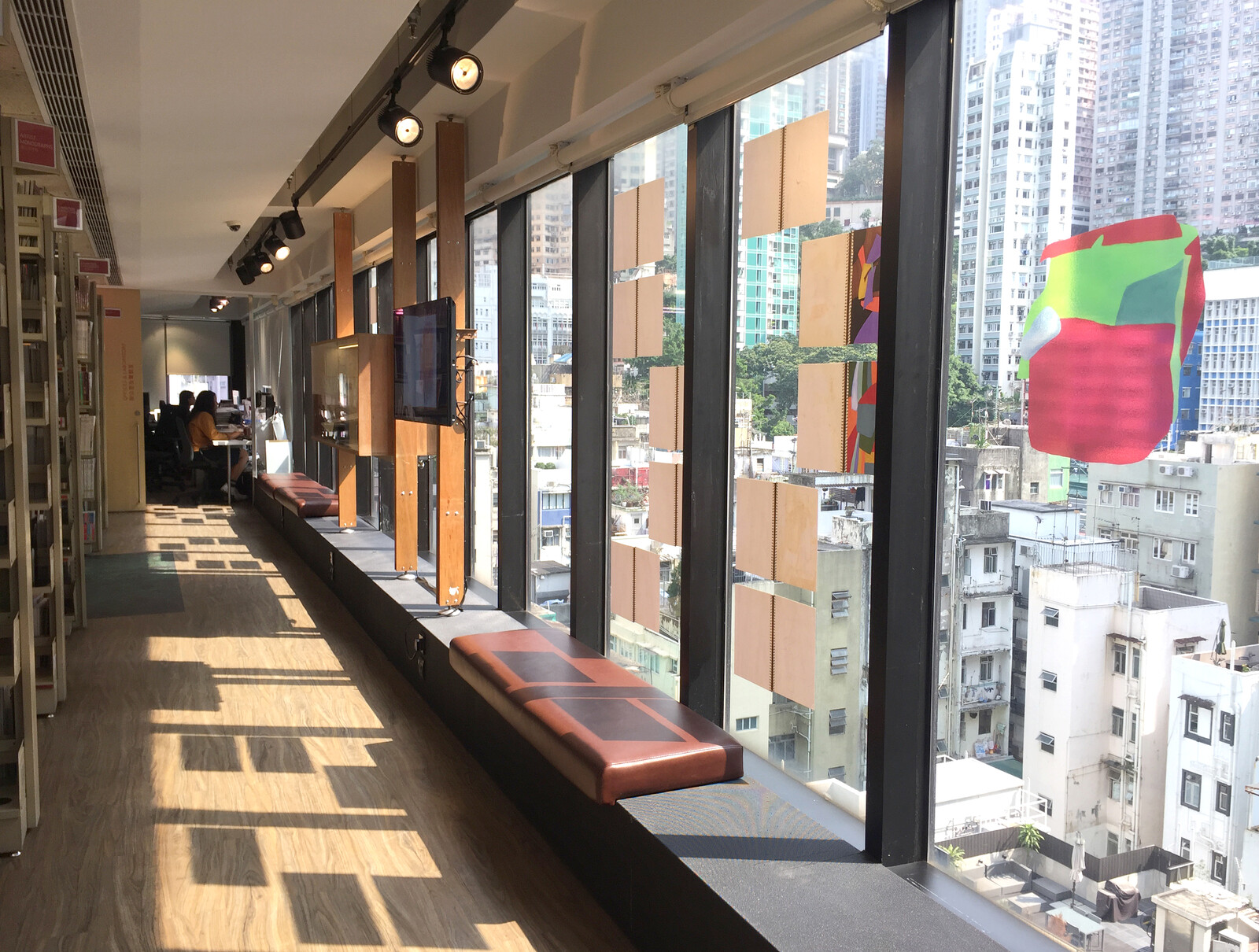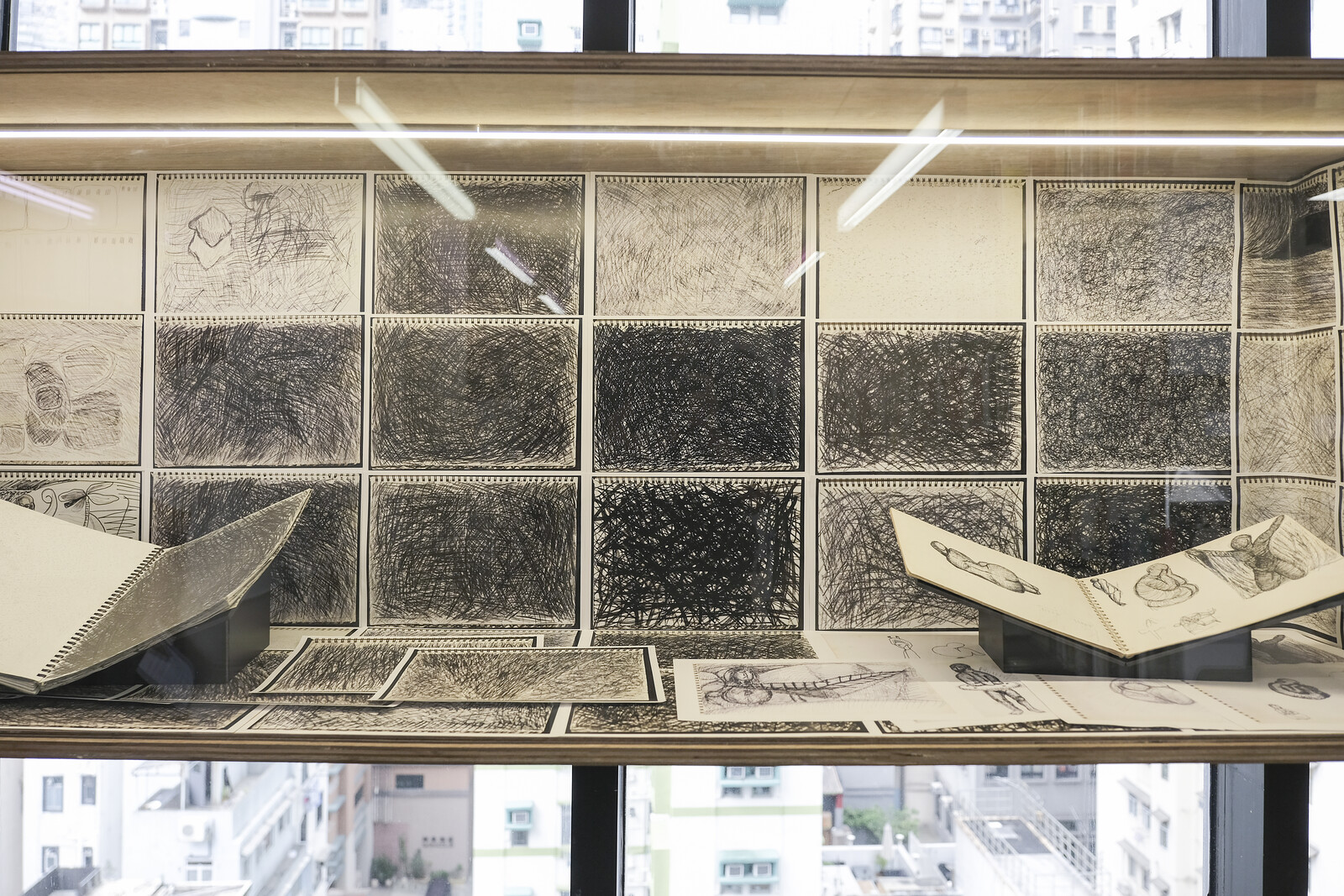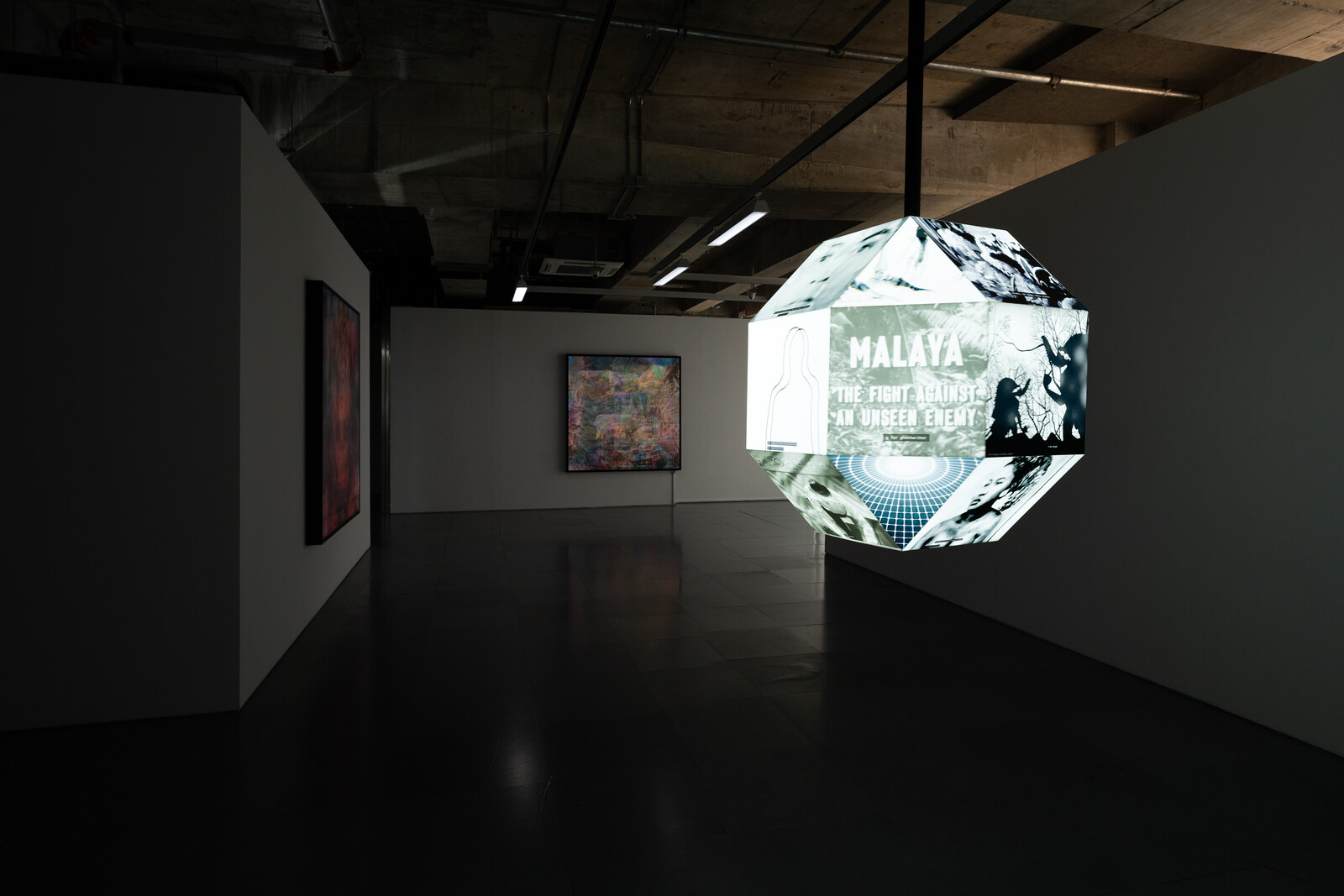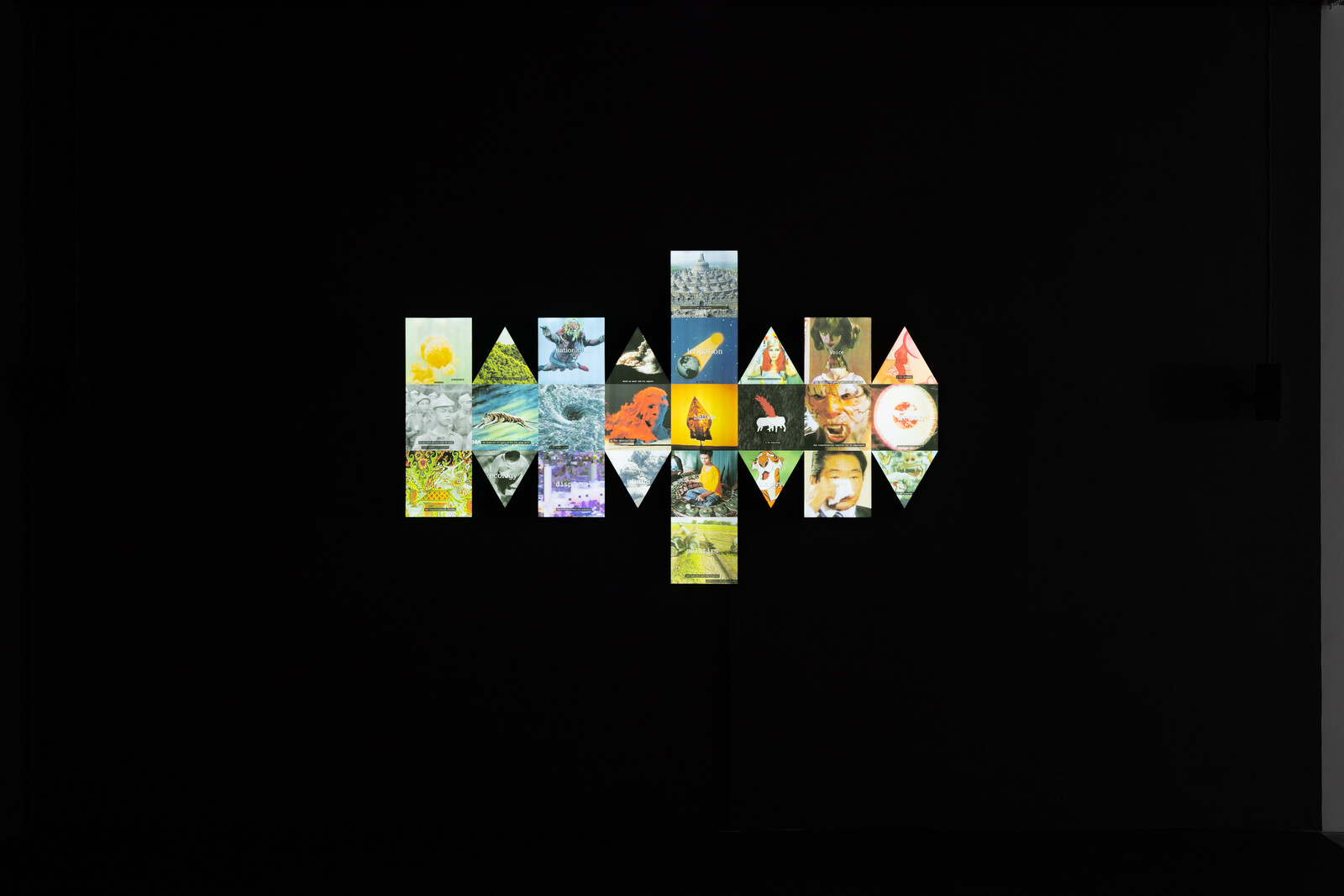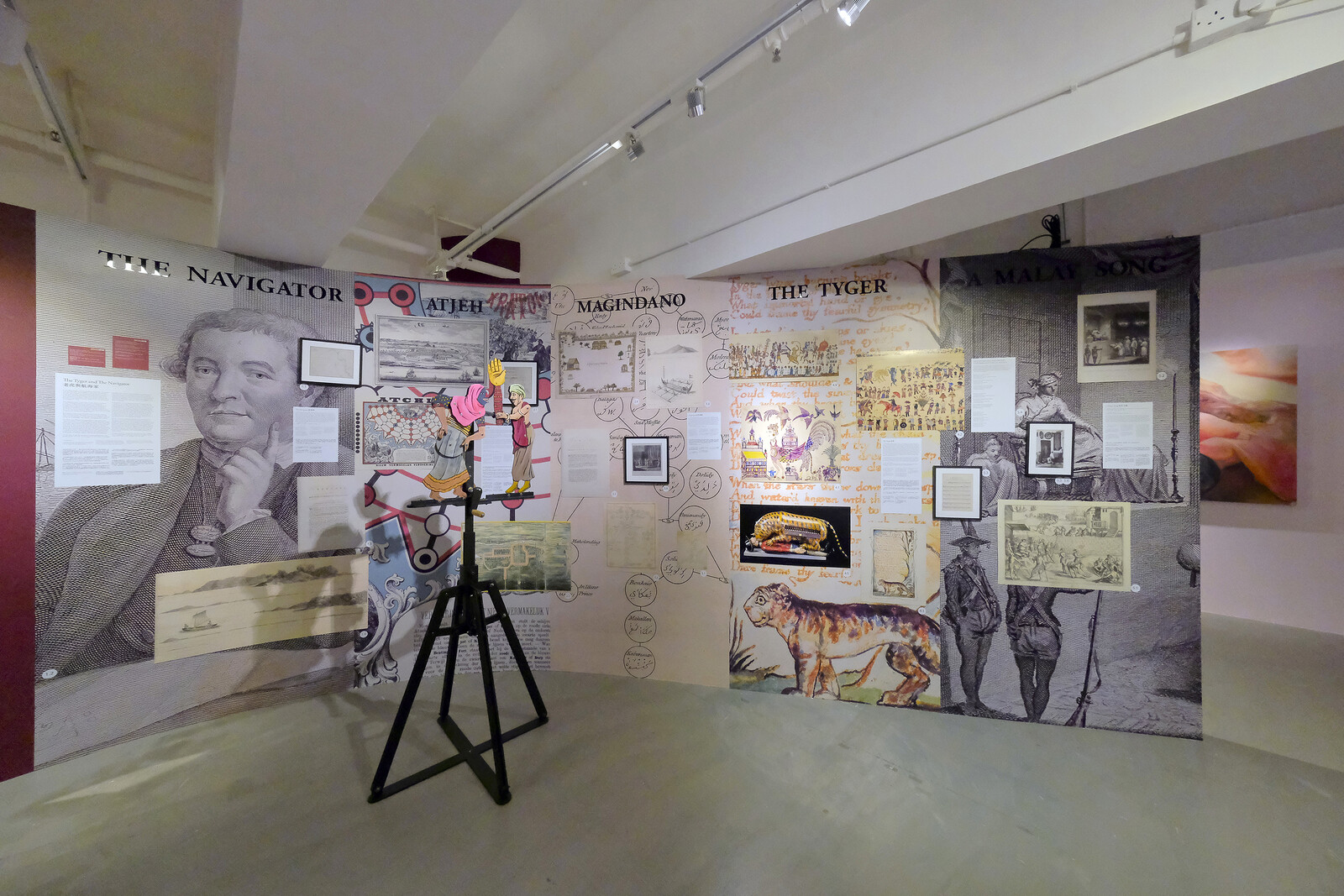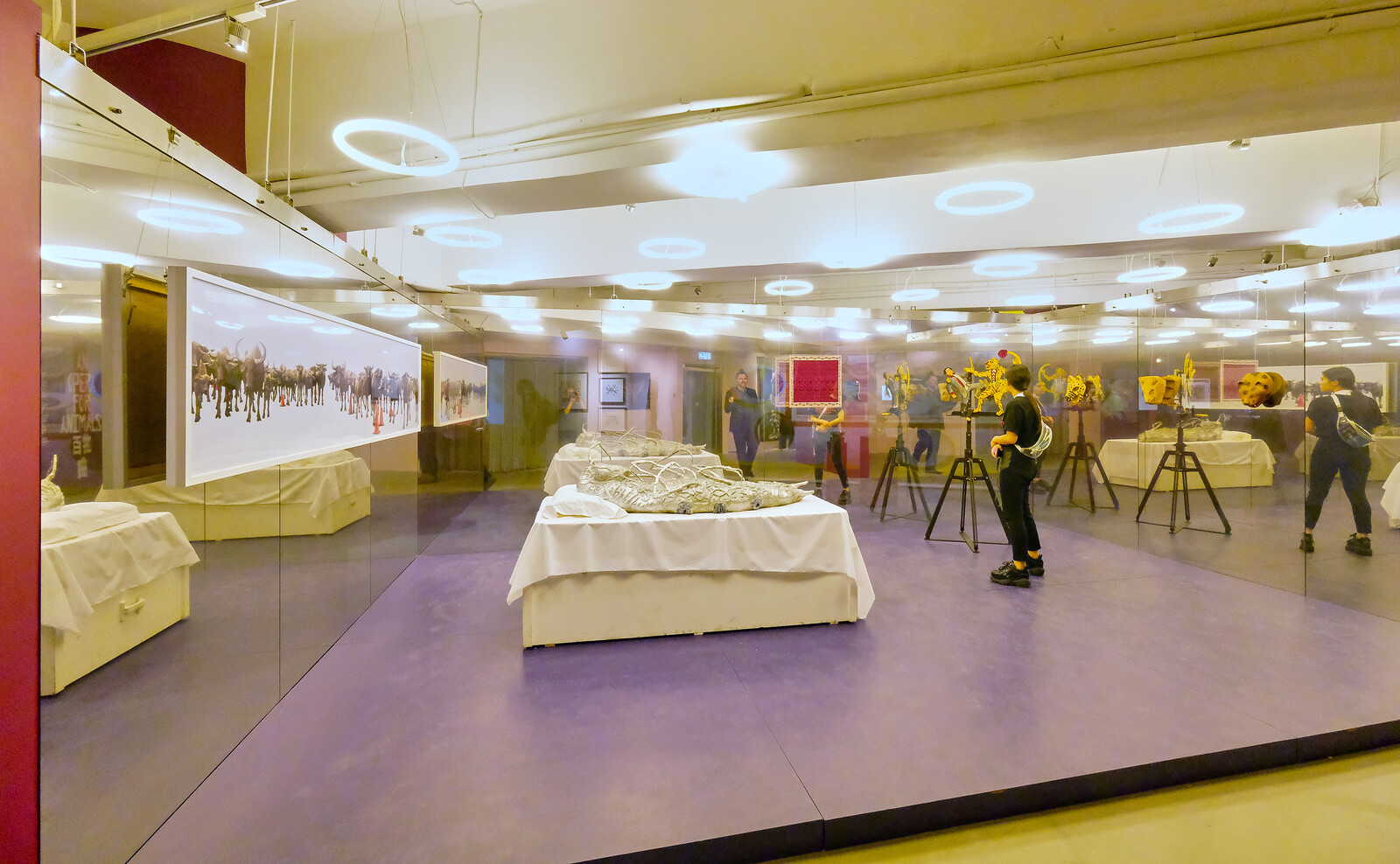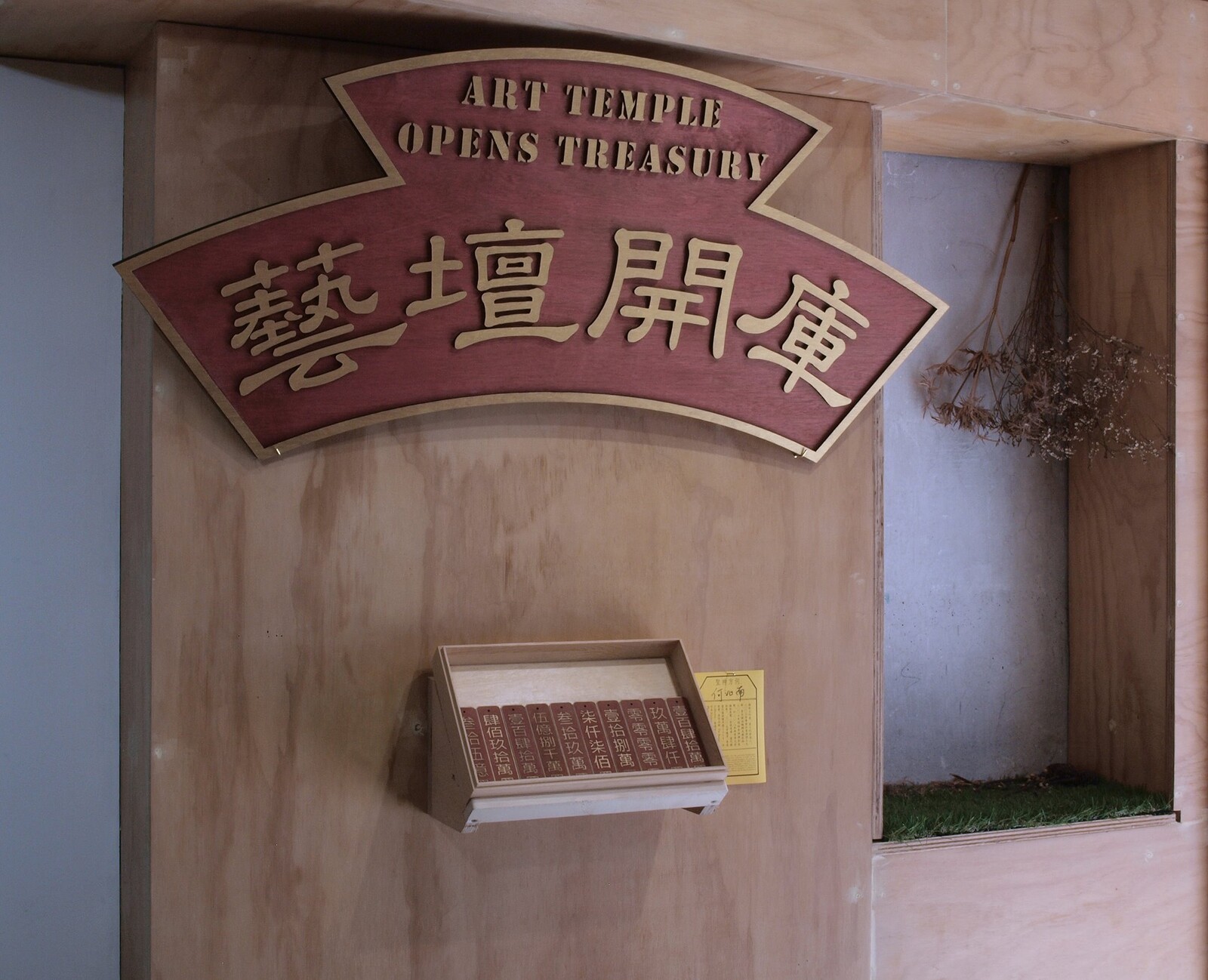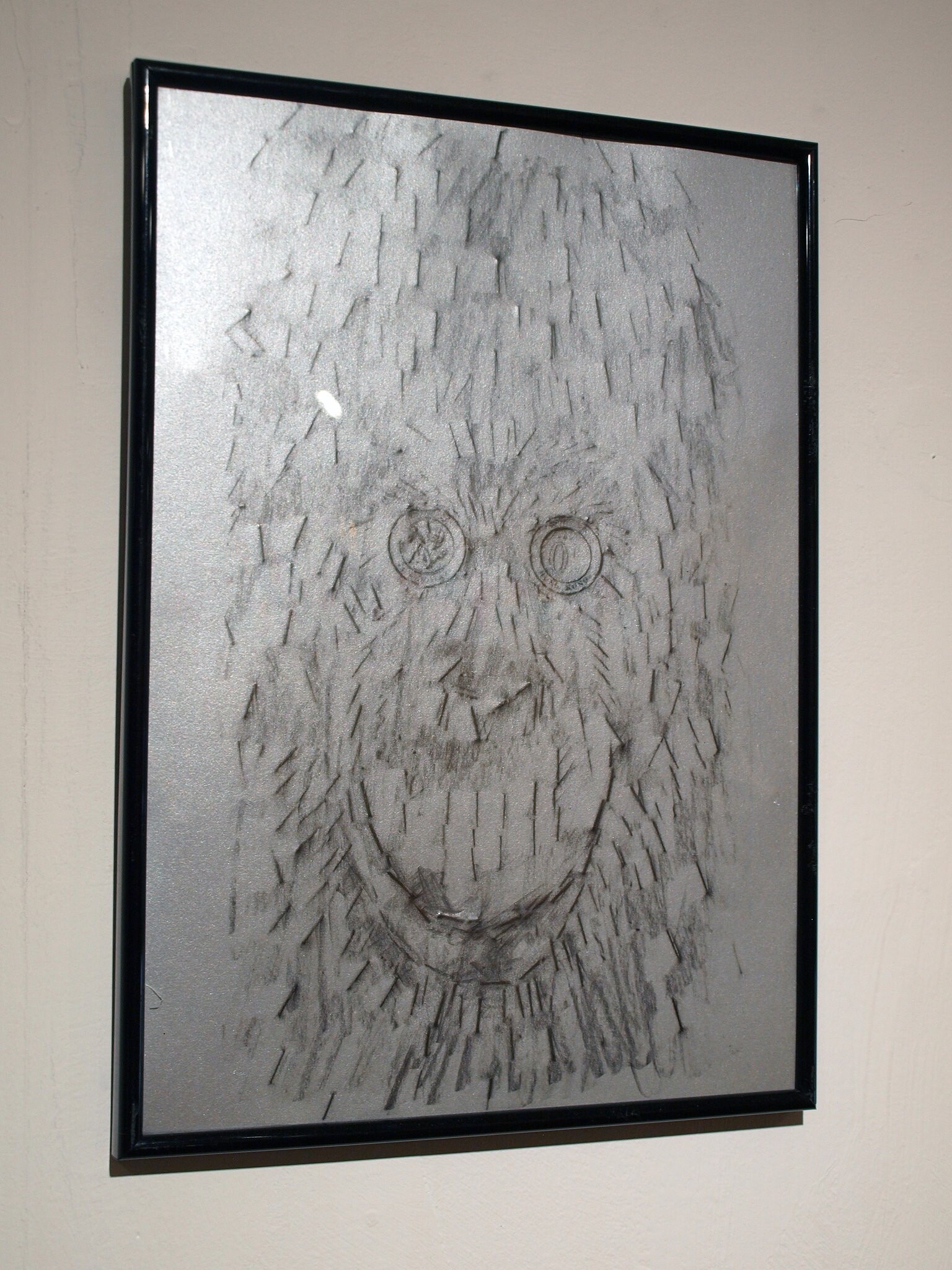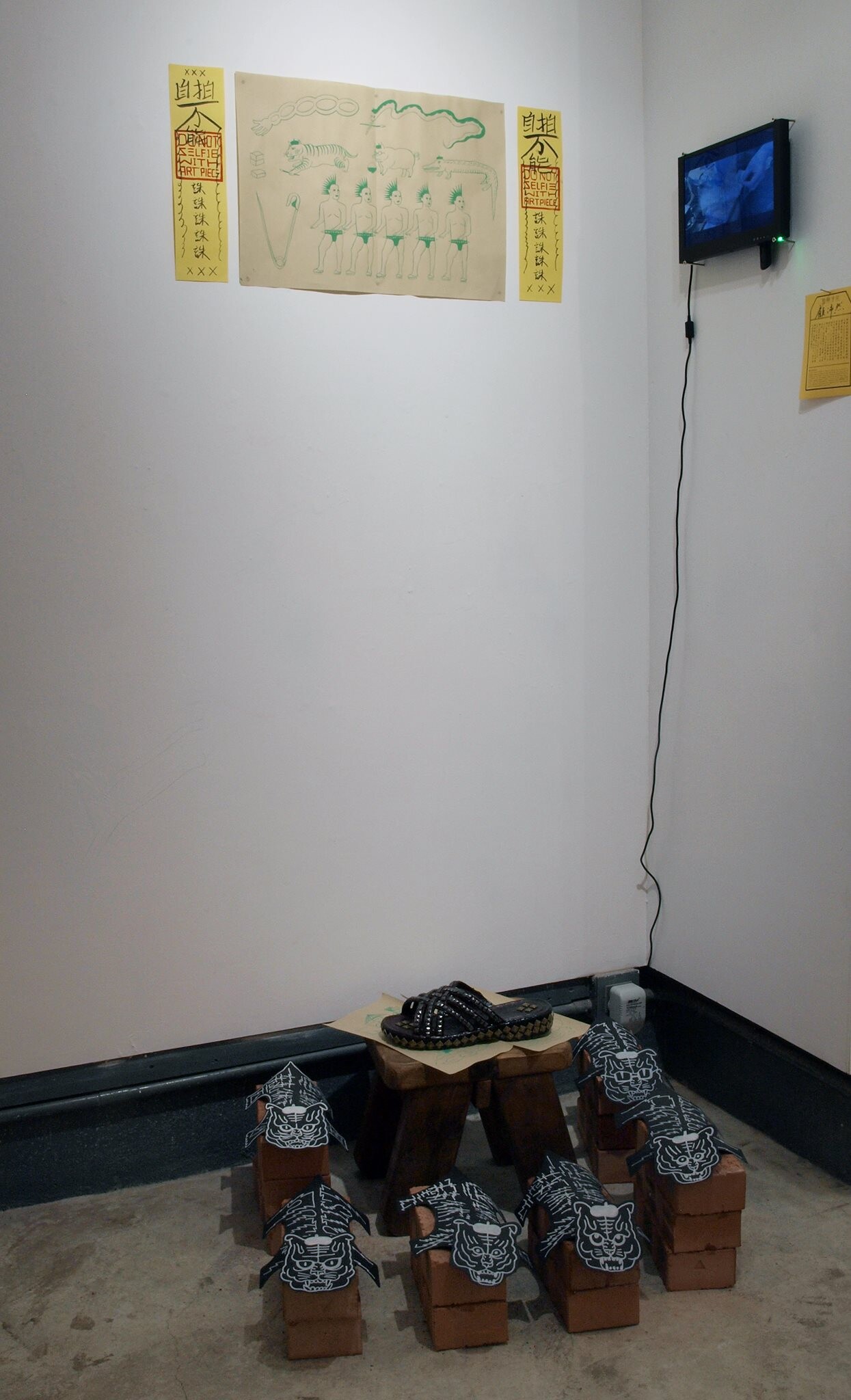Hong Kong floats, at least according to Xi Xi’s short story, “The Floating City.” In this sensitive portrait of Hong Kong, the city has stabilized into myth, while its inhabitants have turned into a group of happily amnesiac petits bourgeois, desiring only for peaceful homes. After a few years of toil, the city became prosperous and cosmopolitan, boasting art festivals and books from all over the world. The floating city was a miracle.1
This sensation of floating is best captured by Art Basel Hong Kong’s public art section, “Encounters.” In Elmgreen & Dragset’s City in the Sky (2019), the global financial metropolis is literally turned upside-down; whereas Lee Bul’s Willing To Be Vulnerable – Metalized Balloon (2019), a shiny emblem of high modernity’s aspirations and failures, hangs languorously from the convention center’s ceiling. By virtue of their scale, these spectacles were well received by a public hungry to update their WeChat or Instagram feeds. At same time, looking at these monuments aloft in the air, the question remains: What keeps everything afloat?
This was also the source of trepidation by inhabitants of Xi’s floating city. Unnerved by the possibility of an Icarian fall, they wished to pack up and leave the city forever. During the week of Art Basel, a glut of cultural events—the satellite fair, Art Central; the Hong Kong International Film Festival; and the Hong Kong Arts Festival—provided a coping mechanism, as defined in cultural theorist Ackbar Abbas’s writing on Hong Kong. With no outlet for political idealism, energies are directed toward the economic sphere, for “if you cannot choose your political leaders at least you can choose your own clothes.”2
Hong Kong’s feelings of endangerment were catalyzed by the double trauma of the 1984 signing of the Sino-British Joint Declaration and the 1989 Tiananmen Square Massacre. While these events marked the “anticipated end of Hong Kong as people knew it,” they also brought about “the beginning of a profound concern with its historical and cultural specificity.”3 The 2014 Umbrella Movement was not only a demand for true universal suffrage, but also a mass outpouring of the youth’s disillusionment concerning the city’s future. In the months leading up to Art Basel, the Hong Kong SAR government outlawed a localist political party, while university campuses have seen a clampdown on student activism. In the arts, cases of self-censorship have burgeoned. The latest involved arts center Tai Kwun’s cancellation of a talk by Chinese dissident novelist Ma Jian, who was expected to introduce his satirical novel China Dream (2018) at the Hong Kong International Literary Festival, only to reinstate the event after public criticism.
Against the city’s political backdrop, Art Basel Hong Kong seems precious, insulated, and somnambulant. Critique of the art fair’s flamboyant display of capital was offered up by artists themselves. In the “Discoveries” section, Shanghai gallery Capsule presented Hai-Hsin Huang’s drawing Art Basel (2018), a bird’s-eye-view caricature of the art fair. Adroitly satirical, Huang captures the usual suspects that make up the fair’s attendees: art-school hipsters, well-heeled collectors, and art-selfie aficionados. There are attempts at wider political critique, as with Heman Chong’s Foreign Affairs #10 (2018) at local Rossi & Rossi’s booth. Photos of the backdoors of embassies around the world are systematically repeated on unstretched canvas, confronting viewers with the opaque mask of high diplomacy.
Asia Art Archive’s “The Body Collective: Performance Art Histories” stood out with its archival display and public program on performance. In Asia, the medium has been embraced on the principles of ephemerality, accessibility, and social engagement, which serve as a counterpoint against the market-oriented fetish for the art object. At their library in Sheung Wan, Asia Art Archive mounted a thoughtful exhibition on Lee Wen’s sketchbooks and notebooks. In memory of the late Singaporean performance pioneer, “Form Colour Action” explored the relationship between performance and the page. For Lee, two-dimensional matters of color, volume, or composition were never separated from matters of sound, movement, or the body in the space. Adopting this, the exhibition includes photography and film, but also drawing and painting, making an argument for the expansion of the practice of archiving performance to include these mediums.
The vocabulary of performance threads together two other rewarding exhibitions at Para Site and Edouard Malingue Gallery. At Para Site, “An Opera for Animals,” curated by Cosmin Costinas and Claire Shea, was an ambitious reworking of opera to encompass an expansive pluriverse of spiritual work and performance, beyond the elitist category of Western opera. Within the exhibition, the opera is no longer bound to a secularist vision of European modernity, but a form that reckons with monsters, spirits, and sacred animals. An example of this could be found in Chitra Ganesh’s mixed-media paintings, Tiger Robot (2018) and Return of the Cat Women (2018), which borrow references from a panoply of timelines— South Asian mythologies, comic books, and science fiction—to create epic scenes featuring feminist protagonists. The operatic also resounded in Ho Tzu Nyen’s solo exhibition “The Critical Dictionary of Southeast Asia, Vol. 8: R for Rhombicuboctahedron” at Edouard Malingue Gallery. Narrated by the incantatory voice of Singaporean artist Bani Haykal, the video montage at the exhibition’s core constellates critical insights into Southeast Asia, the region of mottled histories, languages, and religions.
Perhaps the most incisive response to Art Basel came from Form Society, an independent space based in the working-class neighborhood of Sham Shui Po. Observing that the fanfare of the fair barely trickles down to the local arts ecology, sardonic faith in fictional “Gods of Art” became the starting point of the exhibition “Hong Kong Art Temple.” Works in the show reconceive Chinese spiritual practices for art market critique. At first glance, artist duo C&G Artpartment’s The God of Networking (2019) is a nondescript board of staplers and ten-dollar coins, but when rubbed with pencil over paper, they reveal an eerie smiling portrait of the titular deity. In the installation Villain Hitting (2019), artist Rex Koo appropriates the customary practice of hitting effigies of one’s personal enemies, toward the cursing of selfie-obsessed Art Basel attendees.
On a more sobering note, “Hong Kong Art Temple” also hosted the pop-up exhibition “Drum & Voice Out” by the Hong Kong Artist Union, which looked at the ongoing financial and labor struggles local artists face. Michael Leung’s Summer Money Vases (2019) consists of a stack of vases, used like piggy banks, that the artist broke open during summers when he was not teaching as a part-time lecturer. Most of the money from the artist’s bank account was channeled to rent, and he survived off coins from these vases. This cycle of money-vase breaking lasted for nine years.
Nearing zero hour, the floating city’s inhabitants continued to dream that they would float, or spread wings and fly away.4 This is a place where the future is no longer predicated by a false choice made between the lesser of two evils: a business-as-usual future for neoliberal capitalism or a future in a political straightjacket. As Xi suggests, a map to this place could be found squarely in the mirror—the lessons offered by history.
Xi Xi, “The Floating City,” Marvels of a Floating City and Other Stories (Hong Kong: Research Centre for Translation, Chinese University of Hong Kong, 1997).
Ackbar Abbas, Hong Kong: Culture and the Politics of Disappearance (Minneapolis: University of Minnesota Press, 1997), 5.
Ibid., 6–7.
“Zero hour” is an allusion to the year 2047 that appears in Xi Xi’s “The Floating City.” 2047 is the year Chinese central government’s “one country, two systems” blueprint for guaranteeing freedoms in Hong Kong expires, 50 years after the Handover.

